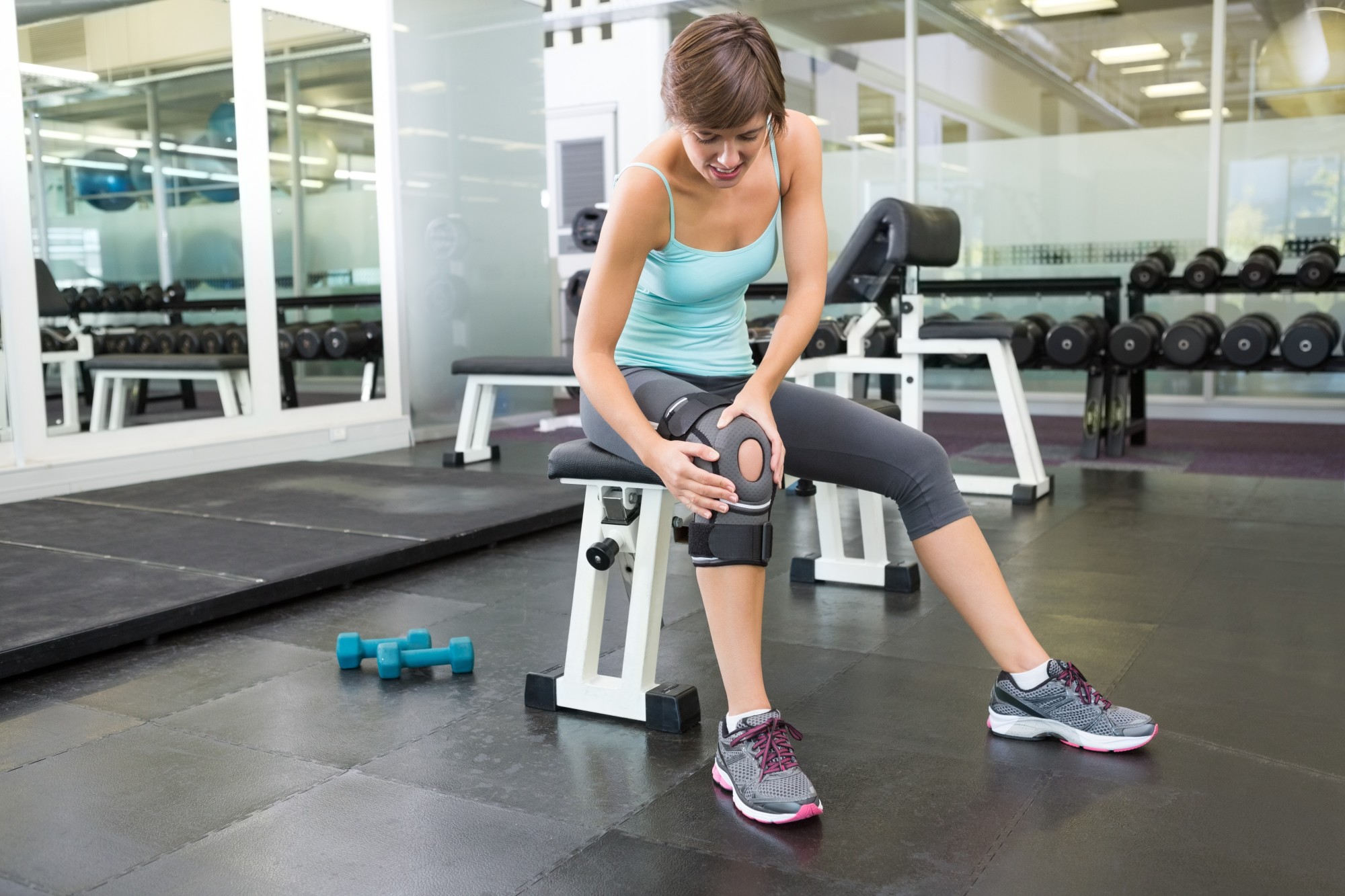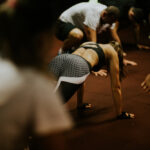How to Work Out Safely While Recovering From Injuries

Did you know getting an injury is the second most common reason most people stop working out? The first is a perceived lack of time, and the third is not having enough fun.
You don’t have to let an injury throw you off your fitness routine for good. In fact, the right stretches and active recovery exercises are essential for recovering from injuries back to your original flexibility and muscle strength.
There are plenty of ways to stay in shape while injured and get back in the gym fast. These tips don’t take any more time than a regular workout would, and some of them might even be a great time. All it takes is the right mentality, a good plan, and lots of patience.
Keep reading to learn how to work out and safely recover while injured.
First: Understand Your Injury
Always see a doctor as soon as you notice you’re injured in a way that impacts your day-to-day life. Many injuries have similar symptoms, so you can’t always rely on self-diagnosis or websites like WebMD—and when it comes to exercising with an injury, you shouldn’t risk it.
Seeing a doctor will let you know the true nature of your injury, which muscles will be impacted the most, and how to get started with recovery. You may learn you actually need surgery or specific physical therapy to prevent further harm. Or, hopefully, they’ll tell you it feels worse than it is.
Fast injury recovery is only possible when you understand exactly what your injury is, why it happened, and how to prevent it in the future. Once you’re informed, you can start adjusting your weekly workout routine and set a date to get back in the gym as usual.
Mentality Is Everything
For many people, the hardest part about injury recovery isn’t even physical. The hardest part is feeling defeated.
You may get sad and angry that you can’t run the marathon you were training for, or that you won’t be able to continue working out with friends. You may start beating yourself up for losing months of progress. Your previous fitness habits may have taken a long time to master, and it can be frustrating to have to rebuild them from scratch.
If that wasn’t enough, many people rely on their workout routines to stay mentally healthy throughout the week. While resting and recovering with adjusted exercise routines, you may notice you get more irritable than you used to. This is totally understandable, as most of us rely on routines to relieve stress.
Setting the right expectations for yourself is the most important part of physical recovery. Recovery from injuries takes lots of trial and error, and getting impatient with yourself or pushing yourself too hard will only make things worse.
Be Patient and Realistic
Don’t push yourself to lift the same weights you were before. Don’t get angry if you’re not healing as fast as you initially predicted either. Set small goals every week, and congratulate yourself whenever you meet them.
Staying realistic will pay off in the long run. Wishful thinking can influence you to push yourself too hard and cause more pain.
If the goals you set initially prove to be too ambitious, readjust them. In recovery, the goal is healing—not competing to break any records.
Stay Optimistic
You don’t have to recover alone. Working out with friends while rehabilitating an injury is a great way to stay motivated, stay optimistic, and have some fun. You might also enjoy trying fitness classes you’ve never done before.
Although your body might be injured, your attitude doesn’t have to be. Always focus on what you can do instead of lamenting all the things you once enjoyed that you can’t do right now. Speak positively to yourself, and be proud of any and all progress.
Fall in Love With Stretching
If you weren’t before, it’s time to start taking stretching seriously.
Stretching regularly is proven to prevent injury, improve flexibility, and even improve your ability to build muscle in the future. While recovering from injuries, stretching is also a perfect way to check in with your body before and during exercise.
Stretching for injury rehabilitation is going to be different than your typical warm-up stretch. Be much more gentle and slow than you normally would, and don’t ignore any sharp pain. You may also want to incorporate heat and massage when you do these.
In the first few weeks after your injury, stick to static and passive stretching.
Static stretching involves putting the body in a position where the muscles you want to stretch are experiencing tension. With gentle, slow movements, you can stretch and contract the target muscles and their opposite muscles.
Passive stretching is any stretch that uses an object or a partner to assist in the stretch. Again, be very gentle and slow during these stretches. Make sure whatever object you’re using is stable and unlikely to move.
In the following months, it’s important to also add PNF stretching.
Proprioceptive Neuromuscular Facilitation (PNF) stretching is key to muscle recovery after injury. Put simply, PNF is a combination of passive stretching and deliberately contracting the muscles being stretched as you stretch them. In between stretching muscles with a partner or object, you flex the same muscles for 5-6 seconds.
If you want a fast injury recovery back to your full strength and range of motion, you cannot skip stretching!
Get Creative With Cardio
Skip long runs and intense HIIT workouts while injured. When your goal is recovery, it’s time to get creative with different types of gentle cardio workouts throughout your weekly workout routine:
- Walks (up inclines and stairs)
- Bike rides
- Swimming
- Yoga
- Pilates
- Elliptical workouts
- Light kettlebell circuits
These are all great supplemental workouts you can do for the days you can’t work out the injured part of your body. Try to keep as much of your weekly workout routine the same, but replace what you can’t do with a fun, new cardio exercise.
Always Listen to Your Body
What does it mean to “listen to your body,” and why is this important?
It’s essential you pay attention to feedback from your body like pain, fatigue, or different sounds like popping and clicking. As unpleasant as it can be, staying off of pain medication while exercising will tell you the most about how your injury is doing.
You should never take strong pain meds to push through a workout while recovering from injuries. This is the wrong mentality to have. Listen to feedback from your body—especially pain—to make sure you’re not causing even more muscle damage.
Pulling back when your body tells you to is not a sign of weakness. In fact, ignoring your body and overexerting while recovering from an injury will make that injury worse most of the time.
Keep it Light
Many types of injuries will prevent you from lifting weights altogether. But, if you can still lift weights with your injury, keep them light. At most, lift about 75% of what you usually do.
While exercising to recover, focus on more reps at a lower intensity. You can still enjoy your workout and build up a good sweat, but now is not the time to be maxing out weights and pushing yourself to failure.
If weight training is important to you, keep up a lighter version of your normal weight lifting habit as much as possible. This will stop your nervous system from making unhelpful adaptations after a month or more of not lifting.
Do Lots of Active Recovery (If Possible)
Active recovery helps you restore your body between workouts. While resting also restores your body, complete sedentary rest is considered passive recovery. Many people consider active recovery more effective than complete rest at helping your body recover after strenuous exercise.
Active recovery releases lactic acid, increases blood flow, and keeps you flexible. This helps reduce soreness after a workout more than passive recovery. Some examples of active recovery include:
- walking
- tai chi or yoga
- swimming
- cycling
- myofascial release (stretching with a foam roller)
- massages
- cryotherapy (cold plunge or ice bath)
- saunas
You can plan an entire active recovery day as part of your weekly workout routine. It’s also important to use active recovery as a cool down after an intense workout, and in between sets during circuit training.
The most important part of active recovery is making sure you don’t overdo it. Move at 50% of your maximum effort, at most. Any more than that, and you might as well be back at the gym. The point of recovery is to relax, enjoy yourself, and get your blood moving just enough to shake out the lactic acid and soreness from the rest of the week.
Focus on Nutrition
You may be tempted to drastically reduce your calorie intake when you find out you’re injured. Resist that urge.
While recovering from injuries that keep you from going to the gym as often as you’re used to, falling into an extreme calorie deficit is one of the worst things you can do. Poor nutrition will keep you tired, sluggish, irritable, and more likely to lose muscle. Recovering from an injury is actually the perfect time to fuel your body with lots of nutritious foods.
During rest days, meal prep some unprocessed, whole food meals with lots of anti-inflammatory ingredients. This will not only help naturally reduce swelling, but it’ll also save you money.
Some of the best natural anti-inflammatory foods are:
- blueberries
- dark chocolate
- turmeric
- ginger
- garlic
- raw oats
- chia seeds
- wild-caught salmon
- spinach
- red, green, and yellow peppers
- fermented foods (like kimchi and sauerkraut)
Have fun with this. Find some new recipes you’ve never tried before. While you’re at it, avoid tempting comfort foods that will contribute to inflammation:
- sugary processed foods
- deep-fried foods
- refined and processed carbohydrates (like white bread and white pasta)
- fast food and instant dinners
Who knows? Maybe cooking more while recovering from your injury will help you develop even better eating habits.
Don’t Skip Any Rest Days
Another bad habit athletes tend to fall into while injured is thinking they don’t have to rest because they’re not working out as rigorously as they used to. This couldn’t be further from the truth.
True, you’ll be probably be doing low-impact cardio instead of HIIT, and dropping lots of weight during strength training. However, the injured part of your body and the surrounding muscles are still working overtime to heal and protect themselves. You don’t want to hinder your recovery by interrupting these important periods of rest.
You don’t need to add any additional rest days unless directed by a doctor. But don’t try to “catch up” on lost progress at the gym by assuming you don’t need rest days during recovery from an injury.
Classes For Athletes Recovering From Injuries
Remember, your body is an amazing self-healing organism. Just because you may be thrown off track by an injury for a few months doesn’t mean you can’t pursue fitness anymore. With the right mentality, light exercise, stretching, and patience, you’ll be back to breaking personal records soon enough.
Looking for low-impact exercises and fun ways to get in some active recovery? We offer hundreds of different group classes for every experience level. Fitness classes at any of our locations can be a great tool while recovering from injuries.
Click here to find out more about the location nearest you.







